Morocco
Mouad Souief is very proud to live in the Bou Inania madrassa, a recently renovated Quranic school in the heart of the medieval old city of Fez, the former capital of the Kingdom of Morocco.
The 25-year-old student feels "heir to the prestigious history" of this madrassafounded in the 14th century, rehabilitated since 2017 and which has revived its centuries-old tradition of an Islam of the "just middle".
Bou Inania, named after the Sultan of the Merinid dynasty Abu Inan Faris (1329-1358), is the most famous madrasa in Fez, a repository of Arab-Andalusian civilization, where students could both stay and study.
Mouad occupies one of the 40 student rooms of the school located within the walls of the venerable Al-Qaraouiyine University.
The oldest in the world according to some historians - built in 859, under the Idrisid dynasty -- it houses five other madrasa, recently restored as part of a program to safeguard Fez's historical sites that have been neglected or are in danger of ruin.
Students share this heritage with tourists who discover the open-air patios, fountains and walls colored with mosaics.
This site bears witness to the "golden age" of Fez, which once again became the capital of the kingdom under the Marinid dynasty, which reigned from the 13th to the 15th century, episodically controlling other parts of the Maghreb and the Iberian Peninsula, after being eclipsed by Marrakech for three centuries.
Place of knowledge
The Bou Inania Madrassa is located near Bab Boujloud, one of the gates of the Old City.
It is one of the first stops on a tourist circuit, which includes two other renowned schools, Cherratine and Attarine, also restored.
"Spiritual and authentic! That's what tourists who visit Fez often tell me," guide Sabah Alaoui told AFP, as she showed two Spanish tourists around the Bou Inania.
Visitors are fascinated by the verses of the Koran and Arabic poems painted on the zelliges, the Moroccan tiles.
You can read a verse that speaks for the school: "I am a place of knowledge, be welcome," explains Lhaj Moussa Aouni, professor of Islamic history and archaeology at the University of Fez.
"These schools were annexes of the great Al-Qaraouiyine University," he said. Aouni. "In addition to Islamic sciences and Arabic literature, they studied mathematics, medicine, mechanics and music.
Leaving the madrassa Boua Inania, at the end of an alley lined with handicraft stores, stands the Al-Quaraouiyine mosque, which dates back to the development of Fez in the ninth century, inseparable from the university.
"A model of open Islam"
"All the scholars who mattered in the Islamic West passed through Al Quaraouiyine," Professor Aouni points out.
Averroes, Ibn Khaldun... But it also attracted European students such as the Frenchman Gerbert d'Aurillac, mathematician and mechanic, future Pope Sylvester II, the Pope of the Year 1000 (999-1003).
It was the time when the cities of Fez, Marrakech, Tlemcen and Oran (Algeria), Kairouan (Tunisia) and the Muslim kingdoms of Andalusia shone.
The university preserves traces of scholars and philosophers in its library founded in the fourteenth century and contains about 4,000 manuscripts "among the oldest in the Islamic world," says its curator Abdelfattah Boukchouf.
The calmness of the reading room -- enlarged in the 20th century by King Mohammed V - contrasts with the incessant hubbub of the neighborhood's artisans.
Among its treasures preserved in a special room, a twelfth-century manuscript of medicine by Ibn Tofail and a copy of the "Kitab al-ibar", the "Book of Examples" by the Tunisian historian-philosopher Ibn Khaldun (1332-1406), which he himself gave to the library.
Modernized, it has been equipped with a laboratory "to restore the damaged parts and extend the life of the manuscripts," says its director, Sabah El Bazi.
The rehabilitation of the madrassas of Fez is also part of Morocco's efforts to promote a religious education "of the middle ground" to respond to Islamist extremist currents.
Thus, in parallel with the restoration, a new five-year course of study has been launched at the University of Al-Qaraouiyine which leads to a diploma of advanced studies in Islamic sciences. It is open to graduates after a competitive examination and a test of memorization of the Koran.
"We study the different Islamic sciences, comparative religions, French, English and Hebrew languages, everything that can allow us to open up to other cultures," explains the student Mouad in his small room that he "prefers to his house".
"We have to be an example of a tolerant Islam and at the level of the great scholars who have passed through here," he pleads.





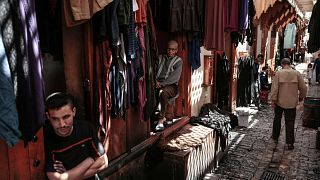
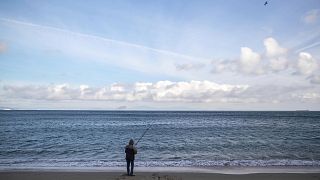
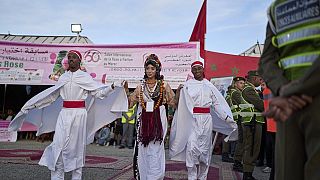
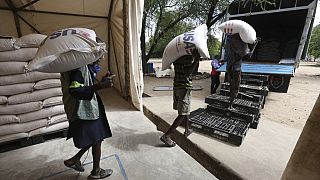
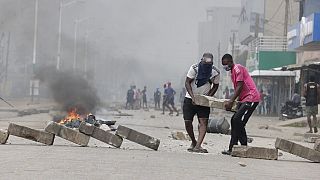
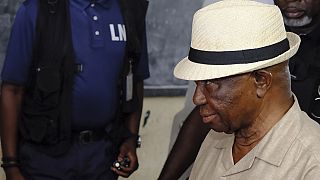
Go to video
Ruto's $9M mega church sparks outrage amid Kenya's crisis
Go to video
Paraguayan town celebrates vibrant Kamba Ra'anga festival with masks, fire and tradition
01:45
From Uganda to NYC: Zohran Mamdani's rise in American politics
00:54
Kaaba’s sacred cover replaced ahead of islamic new year
02:20
In Brazil, knights and masked riders take to a football pitch for religious festival
01:17
Kenyan Muslims pray for Gaza as they celebrate Eid Al-Adha